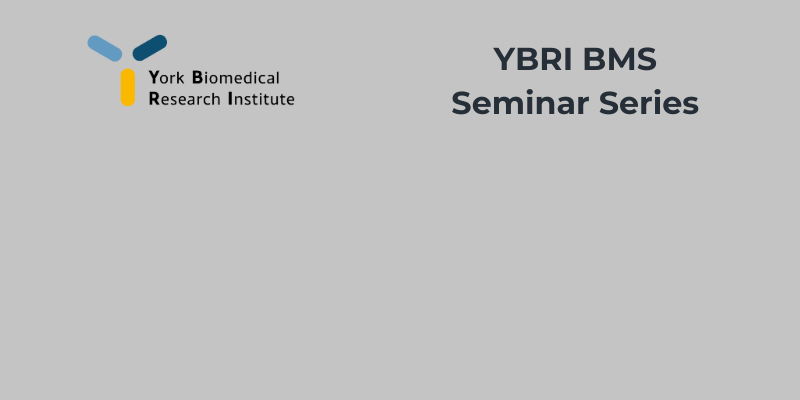
Switching, Counting and Amplifying: Addressing challenges of point-of-care biosensors Professor Christoph Wälti presents his work on molecular nanotechnology, with particular focus on the challenges of point-of-care biosensors. Hosted by Professor Steven Johnson.
Event details
Abstract
Rapid detection of disease biomarkers in clinical samples is becoming increasingly important in modern healthcare where a growing focus is placed on early diagnosis. In fact, biosensors able to detect small concentrations of biomarkers in patient samples at the point of care are one of the cornerstones of modern healthcare. However, with the exception of a few specific analytes, most invitro testing of clinical samples requires lengthy processes by trained personnel.
In this seminar, I will look at two important challenges of point-of-care biosensor approaches – the fact that most assays only measure ensemble-averaged signals, and that most assays rely on single binding events – and discuss some recent advances towards potential solutions.
In current state-of-the-art biosensors, an antibody or antibody mimetic is used to capture relevant biomarkers in the sample, and in general, each antibody–biomarker interaction contributes a small amount to the accumulated assay signal. However, the individual immuno-interactions cannot be distinguished anymore and only manifest themselves as part of this ensemble-averaged signal. Arguably, the ability to detect biomarkers with single entity resolution rather than via ensemble-averaging techniques would provide significant advantages for the detection and monitoring of disease markers. Many single molecule approaches have been developed over recent years – amongst them, the use of nanopores is a promising approach. However, it is very difficult to detect specific molecules in complex mixtures as the signals resulting from different proteins are generally very similar and thus difficult to distinguish. I will discuss how DNA origami functionalised with target-specific capture moieties can be used as carriers for translocation through nanopores and thereby enable individual biomarkers to be identified and counted to compile a sensing signal.
In contrast to typical emerging label-free biosensors, most clinically used assays use detection methods such as enzyme linked immunoassays (ELISA), where multiple specific antigen–binding molecule interactions are required to generate a signal, ensuring that such assays minimise low false positives. A promising approach to introduce the concept of multiple binding events, while at the same time providing significant signal amplification, into point-of-care assays are enzyme-switch biosensors. A number of such enzyme-switches have been developed recently. Here, I will briefly introduce two different enzyme-switch biosensors. Our one-component switch sensor utilises target-driven disruption of an enzyme-inhibitor complex – β-lactamase – β-lactamase inhibitor protein –to produce a signal. Our second sensor switch is a two-component switch based on the Nano BiT technology and relies on target-driven re-complementation of two luciferase fragments into an active enzyme to produce a signal. Both sensor designs are functional in clinical samples and offer time-to-result of < 30minutes. While both sensors offer sensitivity and specificity comparable to typical ELISA, the two-component sensor shows significant promise as a platform for point-of-care biosensing.
About the speaker

Professor Christoph Wälti
Christoph is Professor of Bionanotechnology in the School of Electronic and Electrical Engineering.
Christoph graduated from ETH Zürich, Switzerland, with an MSc in Physics in 1995 and received his PhD in 2000 from the Laboratory of Solid State Physics of the same institution with a thesis on the study of the symmetry of the order parameter in the heavy-electron superconductor UBe13. In 2001 he was awarded a Swiss Marie-Curie Fellowship to work on the self-assembly of molecular complexes using DNA at the Cavendish Laboratory of the University of Cambridge.